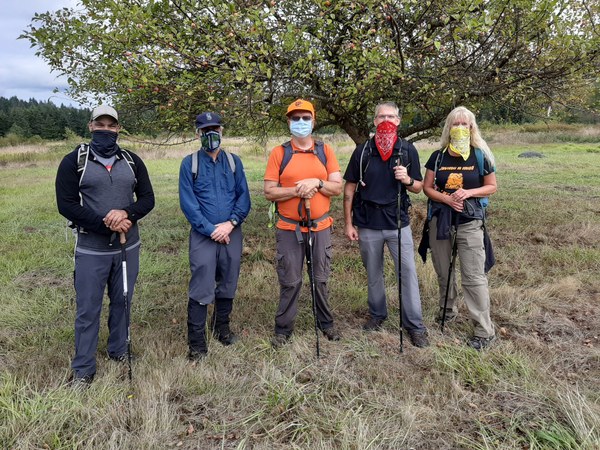
Due to COVID-19, our Olympia Navigation course had to be postponed indefinitely. Following safety guidelines, we were able to hold the course using online tools, which led to great success. In an interview with Navigation Chair Mike Kretzler, he shared what tools and changes led to the new, successful course in September.
How did you modify the class?
During the weeks following the postponement, I confirmed that we could use the club’s online course and made plans to replace our lectures with online resources. Many of the course volunteers took the online course in August and the students took it in early September. Five volunteers assisted the students while they took the online course.
What were the challenges of putting on Covid-safe field trips?
The core of the learning in Navigation is the field days, which we held on September 19 and 20. The field exercises did not change but the manner in which they were conducted was quite different.

Normally, we would have 25 students each day, working in teams of two. They complete the exercises while mixing with volunteers at each station. This year, to reduce contact, we formed groups of four to five students, with two or three volunteer instructors in each group. The groups had staggered start times, so they never interacted on the same exercise with the other group. Everyone was masked all day.
Was it difficult to make the change to the hybrid course?
The change-over to this kind of class, honestly, took less effort for me and volunteers overall, than running the in-person class.
Were there one or two things that really made this class work?
This setup was possible because many people dropped out of the course. Some were concerned about the illness, others weren’t interested in the online method, and some had schedule conflicts.
What do you call success?
This year we graduated 18 students, supported by 17 volunteers. The students were primarily enrolled in basic climbing and scrambling courses. This is under half of a normal navigation course, but, considering the circumstances, it felt like success.
What’s your advice to others looking to take a course from in-person to virtual?
Review the material from the perspective of a student, note the confusing or missing parts, and make it clear to your students up front. Provide support to students during the online portion. We had a mentor for each handful of students. Accept that some students will not want to take the course online, while others will be happy to work on their own time. Provide a reasonable deadline for completing the material. For navigation, provide more hands on time when you do meet outdoors to compensate for the opportunities missed by replacing in-person lectures with online coursework.
 Dee Ann Kline Parkinson
Dee Ann Kline Parkinson